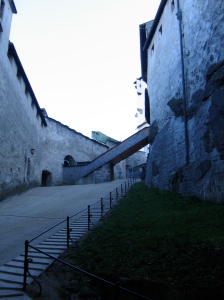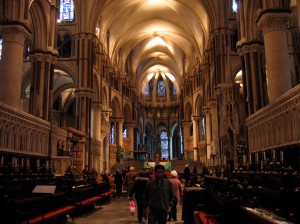Full disclosure: I’m drinking a Pepsi right now. I have maybe half a case of it out in the garage. Once that’s gone, I’m laying off for a while. I’ll tell my mother not to get it for me, and I’ll make sure she keeps it from me even when I go half-mad with withdrawal. It’ll be like Odysseus’ crew tying him to his ship’s mast, only my Siren is a sugary carbonated beverage.
I’ve always loved soda (or pop, whatever) a little too much. Right before finals during the second semester of junior year at KU (May ’08), I did something radical. I gave up soda. I drank tea, milk, juice and Vitamin Water (which, to be fair, is almost as sugary as cola). And coffee. Oh, coffee.
I had the massive headache you’d expect from quitting caffeine cold turkey, but it eventually passed. My break from cola coincided with a move toward healthier foods during the summer I spent on my own in Indianapolis. I gave up beef and pork, completely, for the summer. I ate mostly chicken, turkey and fish. I had whole-grain waffles and bread, eggs, organic potato products, Kashi cookies and granola bars, low-fat yogurt, fruit, spinach and PBJ sandwiches. Looking back, my usual “lunch” at work was vegetarian: water, fruit, yogurt, cheese and either a spinach salad or a PBJ. I lost a lot of weight. Sure, I gained it back as soon as I got back to KU, but that’s beside the point.
Note that I cut out soda. I did not, not at all, cut out caffeine. My caffeine came courtesy of daily (on work days) venti skim-milk mochas from Starbucks, over ice and with no whipped cream. If you knew how much fat was in that whipped cream, you wouldn’t get it either. You know you’re hooked when you take that first sip of cold coffee on a hot day and feel an actual physiological reaction.
So how long did my break from cola last? It lasted until the 2008 Beijing Olympics. One night, working on the sports desk and stressing out from a larger workload and impending deadline, I cracked and drank a Pepsi. And another. Needless to say, my life in the newsroom that school year necessitated caffeine, and while I limited soda last summer in Columbus, I never tried to cut it out totally.
Lately, I’ve started to think more about what I eat. I don’t think I could ever go vegetarian — I’m allergic to mushrooms and picky about a lot of other vegetables. I also like eating meat too much. But I’m trying to make an effort to cut out junk food and soda, and possibly cut down on red meat. I traded store-bought cookies for rice cakes, and I’ve made my own pastries and breads. I’ve researched more healthy recipes and organic food.
I’ve actually been watching History Channel’s Modern Marvels specials about snack food and sweets production. While it’s interesting to see how things are made, it almost makes me feel ill thinking about how overly processed and chemically altered most “food” is these days.
My shift will be a slow one. I’m starting small by phasing out the Pepsi. Then, we’ll see. Stay tuned.




